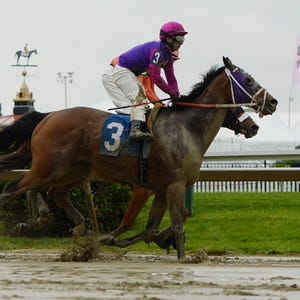Brennan: Horses die, and a sport moves on – USA TODAY
BALTIMORE — Race horses die. Few of us pay attention, but it happens relatively often: various studies have found the number to be about 1,000 a year, or about 1½ deaths per 1,000 starts. They get injured during a race, and are put to sleep, sometimes right on the track, sometimes at the most inopportune time.
It happened last June, when Helwan, a 4-year-old colt from France, broke down at Belmont Park and was euthanized behind a curtain on the track less than three hours before the sports world celebrated American Pharoah’s Triple Crown victory.
If you didn’t hear about this, you’re not alone. A few early stories were written about the horse’s death, but most of us were far too busy covering the first Triple Crown in 37 years to devote even a single sentence to the tragic incident.
On Saturday, it happened again. In the first four races at Pimlico on Preakness Day, two horses died. Maryland-bred Homeboykris, a 2010 Kentucky Derby entrant, suffered an apparent heart attack after winning the day’s first race. Three races later, Pramedya, a 4-year-old filly, broke down in the final turn with a broken bone in her left front leg and was euthanized on the track. Her jockey, Daniel Centeno, was thrown from the horse and taken to a nearby hospital with what was believed to be a broken collarbone.
In a twist of cruel irony, Pramedya was owned by Lael Stables, the owners of Barbaro, who won the 2006 Kentucky Derby before breaking a leg in the Preakness and dying eight months later.
After such tragedy, it’s natural to ask what happened next at Pimlico. The fifth race was run as scheduled, that’s what happened next. And then the sixth, and the seventh, and so on, all the way to the 13th, the Preakness Stakes, the race that thousands in the muddy infield and tens of thousands more in tents and in the grandstands had come to bet on, and see.
The show went on, that’s what happened. That’s what always happens in horse racing. The sport moves right along, and us with it.




